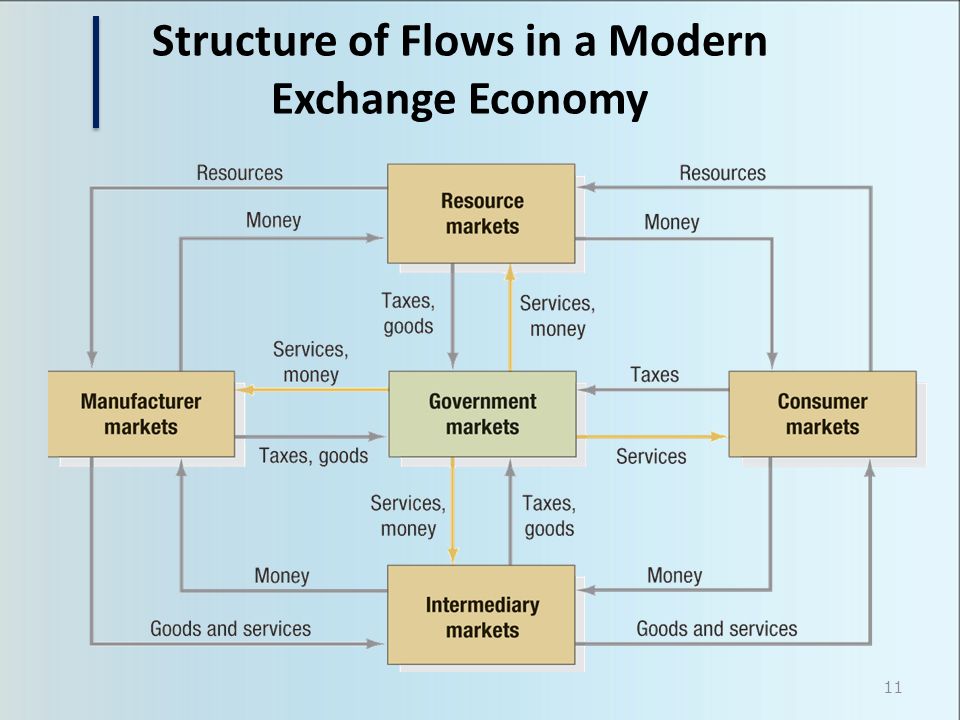Traditionally, a “market” was a physical place where buyers and sellers gathered to buy and sell goods. Economists describe a market as a collection of buyers and sellers who transact over a particular product or product class (such as the housing market or the grain market).

Five basic markets and their connecting flows are shown in below. Manufacturers go to resource markets (raw material markets, labor markets, money markets), buy resources and turn them into goods and services, and sell finished products to intermediaries, who sell them to consumers. Consumers sell their labor and receive money with which they pay for goods and services. The government collects tax revenues to buy goods from resource, manufacturer, and intermediary markets and uses these goods and services to provide public services.

Each nation’s economy, and the global economy, consists of interacting sets of markets linked through exchange processes.
Marketers view sellers as the industry and use the term market to describe customer groups. They talk about need markets (the diet-seeking market), product markets (the shoe market), demographic markets (the “millennium” youth market), geographic markets (the Chinese market), or voter markets, labor markets, and donor markets.
The next diagram shows how sellers and buyers are connected by four flows. Sellers send goods and services and communications such as ads and direct mail to the market; in return they receive money and information such as customer attitudes and sales data. The inner loop shows an exchange of money for goods and services; the outer loop shows an exchange of information.

Comments
Post a Comment